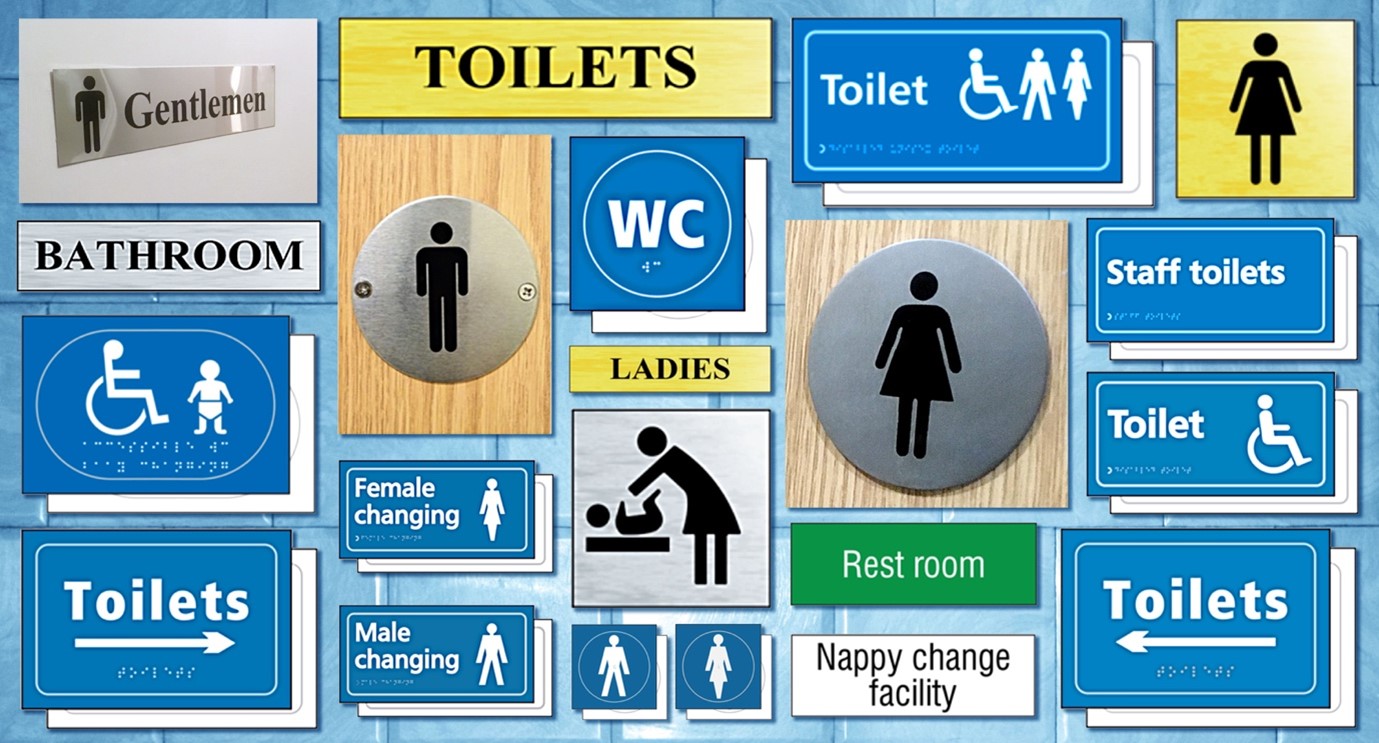
Restroom laws can get complicated. It may seem simple on the surface, but there are safety and human rights concerns with bathrooms.
However, as a business, you need to know how to supply the correct bathroom provisions. That starts with bathroom signs – without them, you aren’t complying with the law, and that leaves you open to lawsuits.
From gender expression to cleanliness, there are numerous factors to consider with bathrooms laws. Restroom signs form just one part of that, and we’re here to explain everything you need.
Relevant Legislation for UK Toilets
The HSE explains that under the Workplace (Health, Safety and Welfare) Regulations 1992 Regulation 20, bathrooms must have:
- Suitable and sufficient sanitary conveniences
- No prejudice in sanitary conveniences
- Separate male and female toilets
- Ventilation and regular cleaning
However, as we’ll explain below, bathroom laws aren’t as clear cut as the above sets out.
How Many People per Toilet in a Workplace?
So, how many toilets do you need? According to The Chartered Institution of Building Services Engineers (CIBSE), the minimum amount of toilets is as follows:
- Up to five people – one toilet
- Up to 25 people – two toilets
- Up to 50 people – three toilets
These toilets require an official means of flushing, with enough toilet roll and a coat hook. Women’s bathrooms must also have adequate disposal facilitates for sanitary items.
The amount of toilets needed, however, does vary based on who will be using them.
How Many Toilets Do I Need for a Female or Mixed Workgroup?
For an all-female or mixed gender workgroup, the minimum number of toilet cubicles required are as follows:
- Up to five people – one toilet and one washbasin
- Up to 25 people – two toilets and two washbasins
- Up to 50 people – three toilets and three washbasins
- Up to 75 people – four toilets and four washbasins
- Up to 100 people – five toilets and five washbasins
For every additional 25 people, an extra toilet and washbasin must be added.
How Many Toilets Do I Need for a Male Workgroup?
For an all-male workgroup, urinals must also be considered. The minimum amount of toilets and urinals required are as follows:
- Up to 15 people – one toilet and one urinal
- Up to 30 people – two toilets and one urinal
- Up to 45 people – two toilets and two urinals
- Up to 60 people – three toilets and two urinals
- Up to 75 people – three toilets and three urinals
- Up to 90 people – four toilets and three urinals
- Up to 100 people – four toilets and four urinals
For every 50 people over 100, an additional toilet and urinal should be added.
What Washing Facilities Does a Workplace Bathroom Need?
A bathroom should have washing facilities:
- Near the toilet
- Near changing rooms
- That have access to warm and cold water
- Which are well-ventilated, clean and properly equipped
As part of being “equipped”, toilets need to have the correct signs. In particular, signposting disabled bathrooms needs the utmost attention.
Signposting Disabled Bathrooms
The Equality Act 2010 states that signposting disabled signs is essential. Easily seen labels and signs are a baseline requirement.
The design of bathrooms must accommodate all disabilities, too, from mental to physical.
We have covered how to use disabled bathroom signs in our blog post: Disabled Guidance Safety Signs: What Does The Legislation Say?
Discover Our Range of Toilet Signs Today
To ensure you meet the latest bathroom sign laws, then discover our range of toilet signs. We have signs for male, female, gender-neutral and disabled bathrooms. These are designed to last for the long term and can be clearly seen and understood.
For everything else, follow us on X for the latest safety and label-based news.